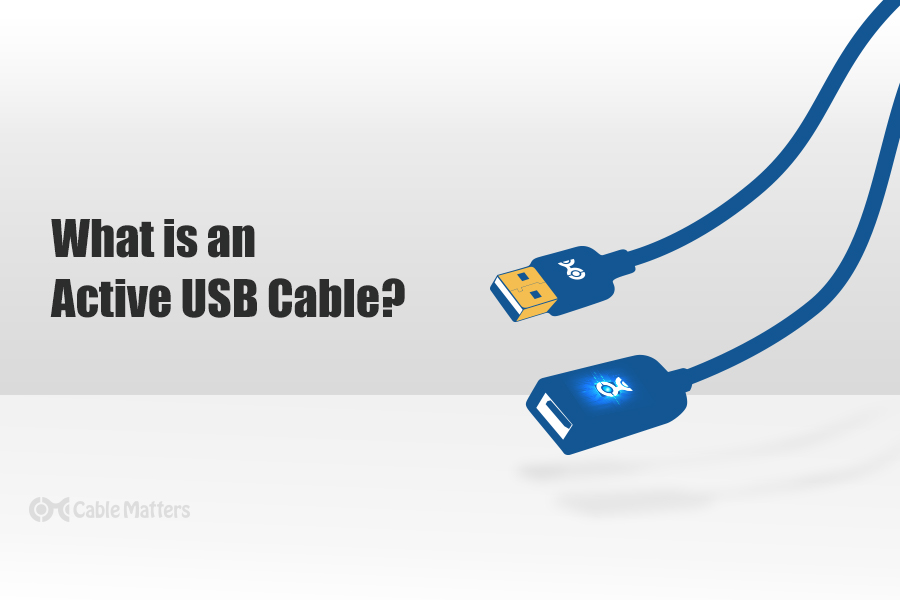
From the outside, it might seem like a cable is a cable. It has a wire and a rubberized exterior for protection. But there's much more to them than that. There's shielding to consider, the quality of the internal wire twisting, foil wrapping, and generational differences in all sorts of standards, including USB. There are also passive and active cables, and which one you pick can have a dramatic impact on the cable's pricing and capabilities.
Most USB cables are passive, so you're likely quite familiar with them. But what is an active USB cable? It's a cable with a boosted signal that helps maintain the integrity of the data it's carrying over longer distances.
What makes an active USB cable?
A passive USB cable is passive because it merely carries the data that's transferred through it. It does not interact with it beyond sending it from one device to another. A passive cable is a wire and a few protective coatings – even Cable Matters’ USB cables, which are all high-quality and feature shielding and other protective measures.
An active USB cable is something else. At one, or sometimes both ends of an active USB cable, are small electronic circuits which boost the intensity of the data being carried by the cable. This can go a long way to warding off signal degradation due to attenuation. That's only typically a problem in longer passive cables, however, which is why active USB cables are recommended for the longest of cable connections.
What is an active USB cable? It's a cable that can make your USB connection go far further by extending it and repeating the signal to retain its quality along the extra wiring.
How long can an active USB cable be?
A passive USB cable can reach around 16 feet comfortably when operating at USB 2.0 speeds, though faster USB 3.0 and 3.1 specifications don't suggest you go over nine feet with a passive cable. Higher quality cables might let you go beyond that, but you will likely start to face problems of signal degradation over that limit while operating at higher speeds.
Active USB extension cables, on the other hand, can go much further. There are active USB 2.0 and 3.0 extension cables that can reach up to 33 feet – although 4K-ready USB-C 3.1 cables max out at around 10 feet.
If you want to take full advantage of everything USB-C has to offer, reading this guide to USB-C cable length can help you break down what you need and why. USB-C is the new kid on the block, with some key differences between it and both other capable connection standards, and older USB generations.
This applies to other standards as well. Where a passive HDMI cable can comfortably stretch to around 25ft, an active HDMI cable can go up to 100 feet in some cases.
Where should you use active USB extension cables?
Not everyone needs an active USB cable. Due to the shielding they enjoy, and the active processing chips at one or both ends of the connection, they tend to be noticeably more expensive than their passive counterparts. That's why if you're looking to run a short USB cable, no matter the speed, sticking with a passive cable is your best bet – even if you use a passive USB 3.0 extension cable to make it fit.
But if you're going for distance, or you want to absolutely guarantee the quality of your connection, then an active USB extension cable is a great way to do it. This can also be of paramount importance when you're dealing with something like a virtual reality headset, or particularly high-quality display or monitor. There's little point in you buying a high-end display (head-mounted or otherwise) to only send its data down a poor-quality cable that won't be able to deliver a quality image.
If you need a little extra help extending your virtual reality headset, check out our guide to VR extension cables. There are plenty of options for you to pick from to make your room-scale playspace feel like another world.
You could also consider wireless virtual reality, though it's not quite where it needs to be to take the industry by storm. While we wait for faster processing and better batteries, an extended wired VR headset is almost certainly the best virtual reality experience you can have right now.